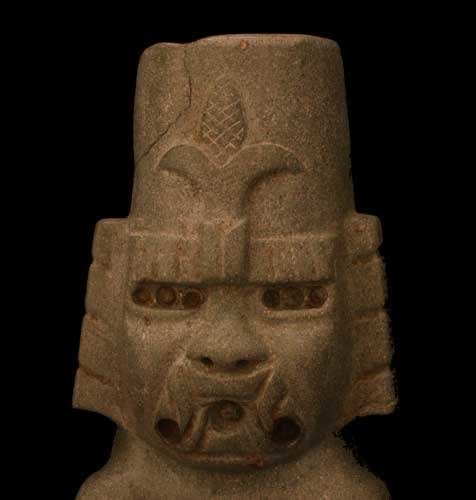Olmec Jade-Green Stone Sculpture of the Maize God Seated, 900 BCE - 500 BCE
Jade
10
SP.536
Further images
The Olmec civilization was to the New World as Greece was to Europe. The Olmec were the founding stone and well of knowledge from which all succeeding Meso-American cultures drew...
The Olmec civilization was to the New World as Greece was to Europe. The Olmec were the founding stone and well of knowledge from which all succeeding Meso-American cultures drew their religion, society, and art. We most commonly associate the Olmec with the massive stone heads discovered at La Venta and Veracruz, but these laboriously crafted and perfectly balanced giants give us only an idea of the Phediases of the Olmec world. Working with equal skill, and infinitely more delicacy, in the shadow of the stone-heads and their architects, were Olmec Polykleitoses and Michelangelos. In precious rock, they crafted votives of infinite grace and charm. Commingling the animal, the human, and the divine, they brought forth a unique and dazzling blend of every emotional and intellectual pivot upon which the Pre-Columbian mind revolved. The figure seated before us, part man, part jaguar, part agricultural God, is a stunning example of this smelting of the cornerstones of Olmec life. The beast in him leers at us, ferocious still, even after a mellowing period of a few thousand years. His body hunches forward in wild repose, the hands placed upon his knees lost in limbo between fingers and paws. And yet his proud straight cheek bones, his flattened nose, and broad chin give him an aura not only of general humanity- but of a very specific human identity. Interlocked with the Jaguar is a breathing and sentient man. Atop his feral and his human nature, a whimsical element of divinity finds its place. His eyes originally would have been inlayed with six dazzling stones- Perched atop his somewhat noble, somewhat boisterous head, is a regal and Godly crown. From the cleft in his forehead grows a stalk of maize, leading us to liken this deity to the Man of Maize, the Olmec god from whose decomposing body all crops draw sustenance. Only a true visionary, brought up in a culture that understands the rudiments of human life in such a clear and vivid manner, would be capable of producing this votive statue. And while we may no longer worship it as an agricultural ward- the strength and undeniable energy of the jaguar, the clear and innocent beauty of the human, and the majestic nobility of the divine that thrive within this piece mean just as much to us now as it did to the Olmec then. How exceedingly rare, what an undeniable pleasure it is- to witness artistry, mastery, the reflection of the human universe- occurring on so many levels. Through his fangs the Man of Maize gives voice to an artist, stretching across a bridge of three thousand years, to whisper a subtle reminder to worship the sub-human, the human, and the superhuman, all as parts of man’s most joyous experience- life.





